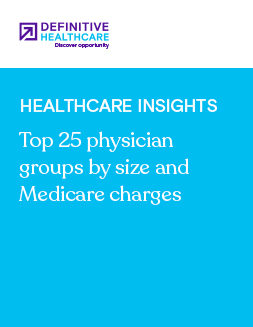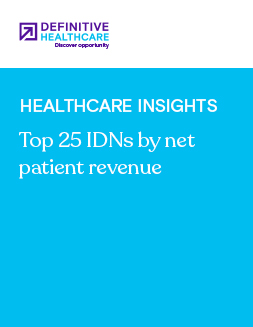Healthcare Insights
Top 5 mammography CPT codes in 2022
Breast cancer accounts for roughly 30% of cancer diagnosed in women, and the average risk of a woman in the U.S. developing breast cancer in life is around 13%. These percentages show the startling impact breast cancer has on many women and their loved ones.
Given these statistics, it’s essential to understand the field of mammography so we can develop optimal therapies, procedures, and devices to improve breast cancer patients’ outcomes.
We compiled a list of the top five CPT codes in mammography by the percent of total screenings below.
| Rank | CPT code | Description | % total procedures | Explore dataset |
|---|---|---|---|---|
| 1 | 77067 | Screening mammography, including computer-aided detection; bilateral | 44.40% | Explore |
| 2 | 77063 | Screening digital breast tomosynthesis; bilateral (list separately in addition to code for primary procedure) | 38.70% | Explore |
| 3 | 77065 | Diagnostic mammography, including computer-aided detection when performed; unilateral | 6.60% | Explore |
| 4 | 77066 | Diagnostic mammography, including computer-aided detection when performed; bilateral | 5.40% | Explore |
| 5 | 77062 | Diagnostic digital breast tomosynthesis; bilateral | 2.00% | Explore |
Fig. 1 Data is from the Definitive Healthcare Atlas Claims product. Data is for the 2022 calendar year through November. Data accessed as of January 2023.
What was the top mammography CPT code?
The CPT code 77067, bilateral screening mammography, including CAD, leads the list with 44.4% of total screenings. Many mammograms feature computer-aided detection (CAD), an FDA-approved technology that identifies suspicious areas within the breast.
It makes sense that this procedure is at the top of the list since it is a screening. Providers suggest all women start having a yearly mammogram at around age 40 unless otherwise indicated. Since CAD is greatly beneficial in detecting problematic areas, many providers utilize this technology.
Code 77067 is also bilateral, meaning that it is a preventive screening looking at both breasts, rather than just one. CPT code 77065, a diagnostic exam, is the only unilateral exam among the top 5 CPT codes.
The table also shows the top two CPT codes are screening mammograms, and the third, fourth, and fifth CPT codes are diagnostic mammograms. Again, it makes sense that screening exams would amount to more procedures than diagnostic exams since providers offer many routine screenings for women.
The fifth CPT code, 77062, bilateral diagnostic digital breast tomosynthesis, is significantly lower than the other four top CPT codes, with only 2% of total screenings.
What is mammography?
Mammography is a type of specialized medical imaging that takes an X-ray of the breast to identify microcalcifications and tumors that may reveal breast cancer presence.
What are the types of mammography?
There are both screening and diagnostic mammograms. Screening mammograms are preventive exams scheduled annually, whereas diagnostic mammograms are longer, more detailed exams.
In both screening and diagnostic mammograms, healthcare providers may use a form of imaging called tomosynthesis, which is a 3-D mammogram. There are a few benefits to this type of mammogram, such as decreased false positives and overall better accuracy.
There are two types of exams within diagnostic mammograms: unilateral and bilateral. Unilateral images one breast, while bilateral images both breasts.
Why are mammography CPT codes important?
Mammography CPT codes are important because they indicate which types of mammograms providers most frequently run. This information gives valuable insight into the services and related technologies used in the oncology space.
What is a CPT code?
A CPT code is a code from the Current Procedural Terminology that identifies the types of procedures and services offered during medical visits. CPT codes help streamline billing and reporting in healthcare.
Definitive Healthcare’s data on CPT codes can give you insights into procedure, diagnosis, and prescribing activity to help you find new paths to commercial success.
Learn more
Healthcare Insights are developed with healthcare commercial intelligence from the Definitive Healthcare platform. Want even more insights? Start a free trial now and get access to the latest healthcare commercial intelligence on hospitals, physicians, and other healthcare providers.



